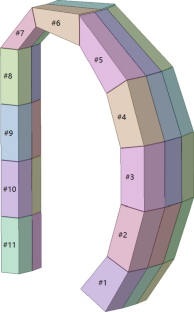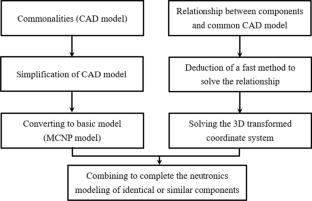Application and Validation of an Improved One-to-Many Method to CFETR Neutronics Modeling
Abstract
China fusion engineering test reactor (CFETR) is a magnetic confinement device which will fill the gap between the fusion experimental reactor and the demonstration reactor. To efficiently conduct neutronics modeling for the multiple identical and similar structures present in CFETR’s modular design, an improved one-to-many method is developed and implemented in this study. This method involves using a basic model in conjunction with a 3D transformed coordinate system. However, the absence of a clear solution method for the transformed coordinate system in MCNP presents a challenge. To address this issue, a solution method based on the axis attributes of the surfaces in MCNP and the composite nature of the 3D transformed coordinate system is developed. The improved one-to-many method has been applied to the neutron modeling of CFETR, and its reliability has been verified. In the neutron calculation model corresponding to the one-to-many and one-to-one methods, relative differences of the total TBR and nuclear heating are 0.25%, 0.07% respectively. The contribution of blanket modules to tritium breeding ratio (TBR) and nuclear heating has a relative difference within the range of − 0.25–0.55%. The relative differences of neutron flux and nuclear heating distribution for individual blanket modules #3–1 and #6–1 are within the range of − 0.60–0.40%. The results indicate that the improved one-to-many method can be employed for neutronics modeling in the preliminary design of CFETR.



 求助内容:
求助内容: 应助结果提醒方式:
应助结果提醒方式:


